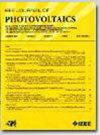比较光伏功率预测:使用人工神经网络模型的地面测量与卫星数据
IF 2.5
3区 工程技术
Q3 ENERGY & FUELS
引用次数: 0
摘要
准确预测光伏发电量对于评估与特定现场天气条件相关的早期项目的可行性至关重要。虽然过去曾使用各种数学模型进行光伏功率预测,但大多数模型只考虑辐照度和环境温度,忽略了其他重要的气象参数。在本文中,利用绿色能源研究设施高精度气象站的1年数据集,以及研究期间暴露的多晶硅c-Si光伏组件的电气参数,来预测光伏功率。此外,考虑到最近研究中卫星数据应用的增长趋势,还研究了使用卫星数据进行光伏功率预测的准确性。回归技术,如具有交互作用的线性回归、树回归、高斯过程回归、回归的集成学习、响应面方法、SVM立方体和人工神经网络(ANN),被用于光伏功率预测,使用地面测量数据和卫星数据。与地面测量获得的较高精度相比,在所有回归方法中使用卫星数据时,观测到的精度相对较低。值得注意的是,高斯过程回归方法证明了高精度(卫星数据R2=0.25,地基数据R2=0.94)。此外,ANN方法进一步提高了光伏功率预测的准确性,卫星数据的R2=0.42,地面数据的R2=0.096。这些发现强调,在依赖卫星数据进行光伏发电预测时,即使使用先进的人工神经网络方法,也需要谨慎。它强调了考虑地基测量以获得更可靠和准确预测的重要性。本文章由计算机程序翻译,如有差异,请以英文原文为准。
Comparing Photovoltaic Power Prediction: Ground-Based Measurements vs. Satellite Data Using an ANN Model
Accurate prediction of photovoltaic (PV) power output is crucial for assessing the feasibility of early-stage projects in relation to specific site weather conditions. While various mathematical models have been used in the past for PV power prediction, most of them only consider irradiance and ambient temperature, neglecting other important meteorological parameters. In this article, a 1-year dataset from a high-precision meteorological station at the Green Energy Research facility is utilized, along with electrical parameters from a polycrystalline silicon c-Si PV module exposed during the study period, to forecast PV power. In addition, the accuracy of using satellite data for PV power forecasting is investigated, considering the growing trend of its utilization in recent research. Regression techniques, such as linear regression with interaction, tree regression, Gaussian process regression, ensemble learning for regression, response surface methodology, SVM cubic, and artificial neural network (ANN), are employed for PV power prediction, using both ground measurement data and satellite data. Comparatively lower accuracies are observed when using satellite data across all regression methods, in contrast to the higher accuracies achieved with ground-based measurements. Notably, the Gaussian process regression method demonstrates high accuracy (
R
2
= 0.25 for satellite data and
R
2
= 0.94 for ground-based data). Furthermore, the ANN approach further enhances the accuracy of PV power forecasting, yielding
R
2
= 0.42 for satellite data and
R
2
= 0.96 for ground-based data. These findings emphasize the need for caution when relying on satellite data for PV power forecasting, even when employing advanced ANN approaches. It underscores the importance of considering ground-based measurements for more reliable and accurate predictions.
求助全文
通过发布文献求助,成功后即可免费获取论文全文。
去求助
来源期刊

IEEE Journal of Photovoltaics
ENERGY & FUELS-MATERIALS SCIENCE, MULTIDISCIPLINARY
CiteScore
7.00
自引率
10.00%
发文量
206
期刊介绍:
The IEEE Journal of Photovoltaics is a peer-reviewed, archival publication reporting original and significant research results that advance the field of photovoltaics (PV). The PV field is diverse in its science base ranging from semiconductor and PV device physics to optics and the materials sciences. The journal publishes articles that connect this science base to PV science and technology. The intent is to publish original research results that are of primary interest to the photovoltaic specialist. The scope of the IEEE J. Photovoltaics incorporates: fundamentals and new concepts of PV conversion, including those based on nanostructured materials, low-dimensional physics, multiple charge generation, up/down converters, thermophotovoltaics, hot-carrier effects, plasmonics, metamorphic materials, luminescent concentrators, and rectennas; Si-based PV, including new cell designs, crystalline and non-crystalline Si, passivation, characterization and Si crystal growth; polycrystalline, amorphous and crystalline thin-film solar cell materials, including PV structures and solar cells based on II-VI, chalcopyrite, Si and other thin film absorbers; III-V PV materials, heterostructures, multijunction devices and concentrator PV; optics for light trapping, reflection control and concentration; organic PV including polymer, hybrid and dye sensitized solar cells; space PV including cell materials and PV devices, defects and reliability, environmental effects and protective materials; PV modeling and characterization methods; and other aspects of PV, including modules, power conditioning, inverters, balance-of-systems components, monitoring, analyses and simulations, and supporting PV module standards and measurements. Tutorial and review papers on these subjects are also published and occasionally special issues are published to treat particular areas in more depth and breadth.
 求助内容:
求助内容: 应助结果提醒方式:
应助结果提醒方式:


